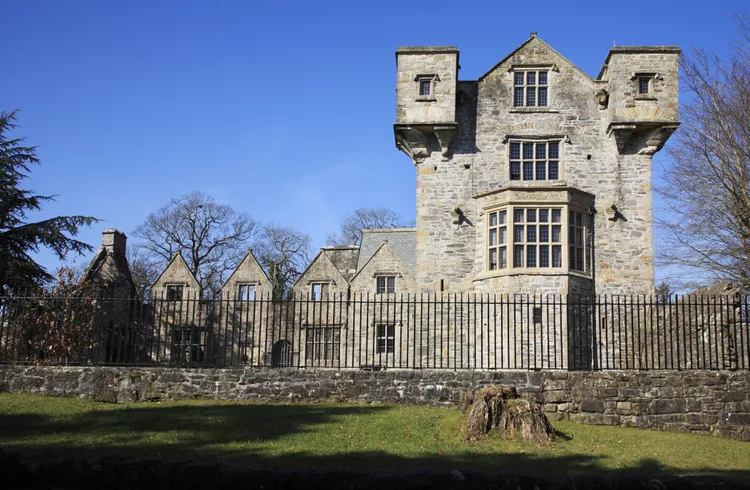History
Donegal Castle is situated along the river Eske in Donegal Town, and it was one of the most significant fortifications belonging to the O’Donnell clan, one of Ireland’s prominent families. Constructed in the 15th century, this castle has a rich history that speaks volumes about Ireland’s medieval past.
The name Donegal translates from Dún na nGall, meaning “Fortress of the Foreigner” in Irish, likely referencing a Viking settlement in the area. Notably, Donegal Castle has emerged as the largest fortified structure within this region.
This remarkable castle, erected under the stewardship of Red Hugh O’Donnell in 1474, symbolized the clan’s power and influence in the Emerald Isle from the 13th century until the early 17th century, proving to be a vital stronghold.
In 1566, the Lord Deputy of Ireland referred to Donegal Castle as:
“…the greatest I ever saw in an Irishman’s hands: and would appear to be in good keeping; one of the fairest situated in good soil and so nigh a portable water a boat of ten tonnes could come within ten yards of it.”
However, the O’Donnell family was compelled to abandon the castle in 1607 during the Flight of the Earls following the Nine Years War. Their departure involved the destruction of the castle’s tower, aimed at preventing its use in future conflicts.
Consecutively, the English monarchy awarded Donegal Castle to Captain Basil Brooke, who restored and expanded it under the Plantation of Ulster plan. Unfortunately, subsequent owners allowed the structure to deteriorate until it was transferred to the Office of Public Works in the late 19th century.
Restoration efforts commenced in the 1990s, meticulously preserving the historical integrity of the castle while enhancing its features.
What to See
Donegal Castle features original constructions by the O’Donnell clan alongside 17th-century additions made by the English family that later occupied it.
The tower house, identified as the most distinctive feature, stands tall within the castle complex. Likely constructed in its original form, it underwent expansions by the Brooke family who added windows and turrets during the 1600s. They also established the English Manor House below the tower in 1623, showcasing majestic Gothic doors and more elaborate second-floor entrances.
Visitors can appreciate remaining architectural elements from the O’Donnell era in the ground-level storerooms, characterized by vaulted ceilings and cobblestone floors. Moreover, the “trip staircase,” designed with uneven steps, serves as a historical defense mechanism against invaders.
Location and How to Visit
Positioned in the heart of Donegal Town within the Province of Ulster, Donegal Castle is conveniently located near Donegal Bay and the River Eske.
It is essential to include Donegal Castle on your itinerary when visiting the area. The castle operates daily, welcoming visitors from 10 a.m. to 6 p.m. during Easter through mid-September, and from 9:30 a.m. to 4:30 p.m. for the remainder of the year. Guided tours are available every hour, providing detailed insights into its history and architecture.
Admission fees are set at €5 for adults and €3 for children, with an estimated duration of 45 minutes recommended to explore the site fully.
What Else to Do Nearby
While Donegal Castle is undoubtedly a highlight in Donegal Town, the surrounding area also boasts stunning attractions worth exploring. A notable nearby site is Lough Eske Castle, once constructed by the O’Donnell Clan, now transformed into a luxurious five-star hotel featuring a spa.
For breathtaking views, consider visiting Slieve League, home to some of the highest cliffs in Europe that offer stunning vistas over the wild Atlantic Ocean in County Donegal.
Additionally, for a taste of local craftsmanship, drop by Magee’s tweed shop in Donegal Town, showcasing high-quality interpretations of the timeless, cozy fabric.





